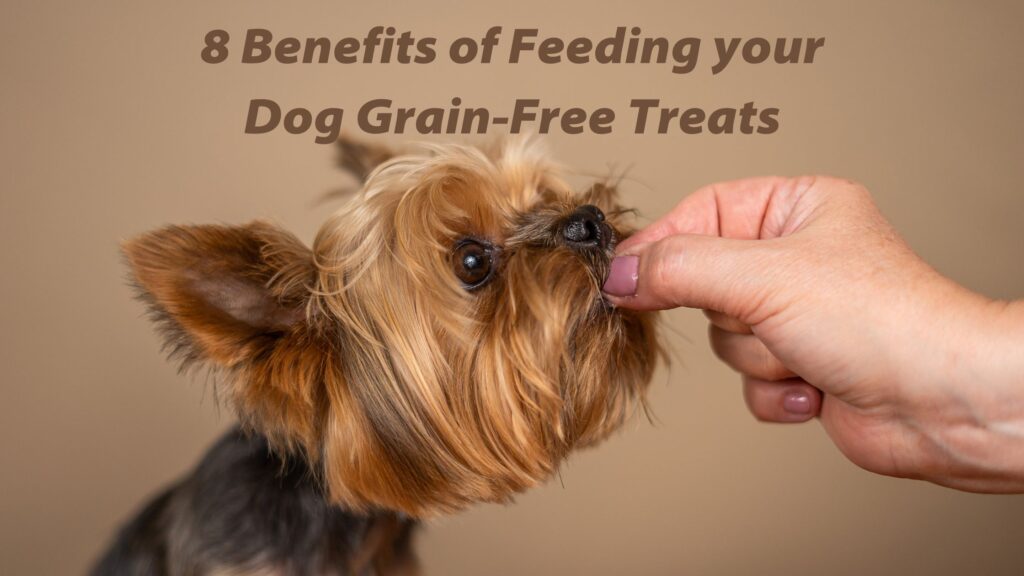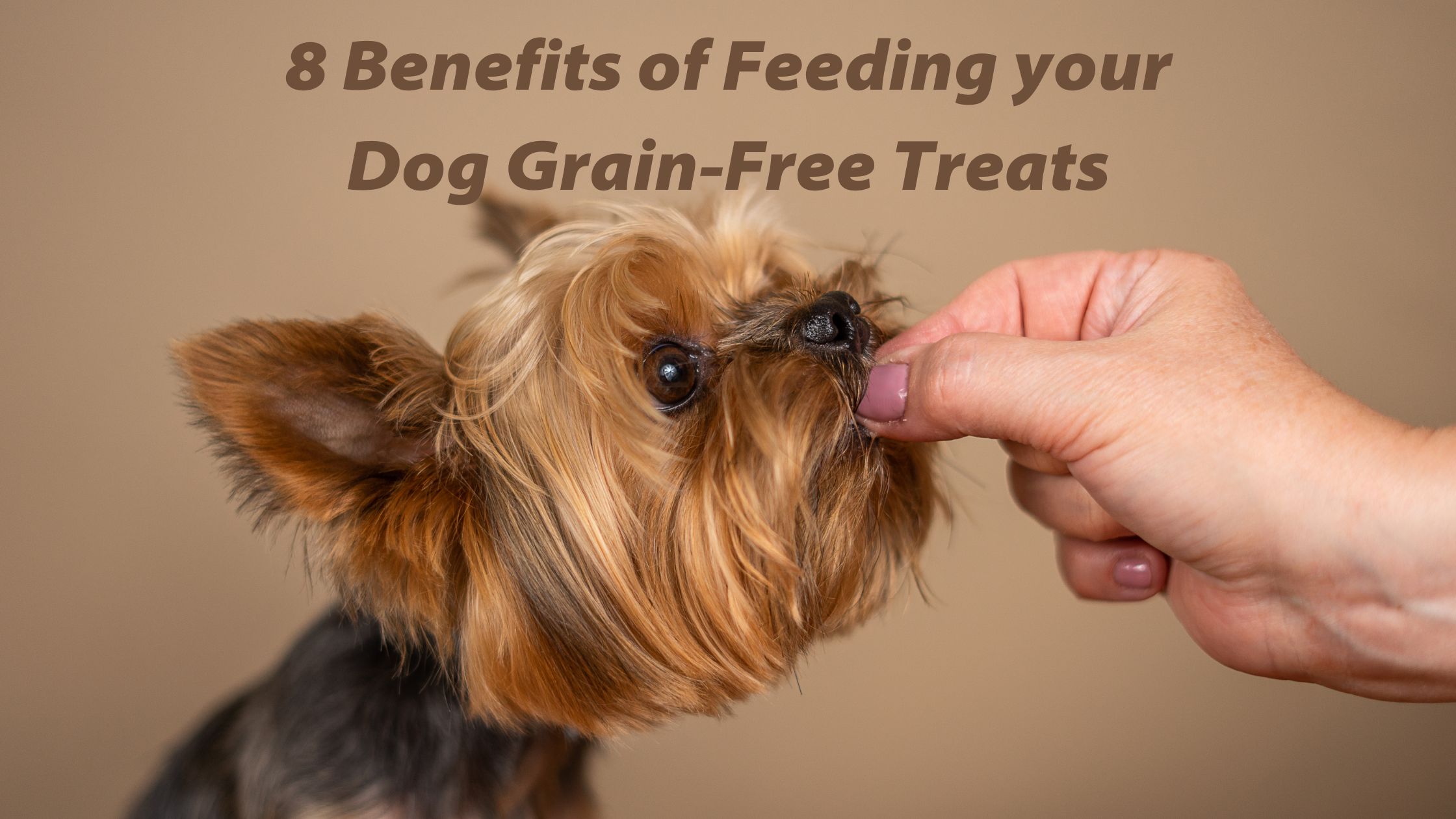
Feeding grain-free treats to dogs has gained popularity in recent years, and there are several potential benefits associated with this dietary choice. While dogs are omnivores and can digest grains, some may have sensitivities or allergies to certain grains or benefit from a grain-free diet. Here are some advantages of feeding grain-free treats to dogs:
- Digestive Health: Grain-free treats can be easier for some dogs to digest compared to treats that contain grains. This is especially true for dogs with grain sensitivities or digestive issues. Grain-free treats typically use alternative flours like sweet potato, chickpea, or tapioca, which are generally gentler on the digestive system.
- Allergy Management: Dogs can develop allergies to specific grains, such as wheat or corn. Feeding grain-free treats eliminates these potential allergens, reducing the risk of allergic reactions and associated symptoms like itching, skin irritations, or gastrointestinal upset.
- Weight Management: Grain-free treats are often lower in carbohydrates compared to treats containing grains. This can be beneficial for dogs that require weight management or those prone to weight gain. Lower-carbohydrate treats can help regulate blood sugar levels and contribute to a healthy weight.
- Improved Energy Levels: Some dog owners find that their pets have increased energy and improved vitality when fed a grain-free diet. This may be attributed to a better balance of macronutrients, reduced digestive stress, or the inclusion of higher-quality protein sources in grain-free treats.
- Enhanced Nutritional Value: Grain-free treats often include a variety of nutrient-dense ingredients like lean meats, fruits, vegetables, and beneficial fats. These ingredients offer a range of vitamins, minerals, antioxidants, and essential fatty acids that support overall health and well-being.
- Dental Health: Some grain-free treats are designed to promote dental health. Dental chews or treats made with natural ingredients can help remove plaque and tartar buildup, freshen breath, and support healthy gums. Grain-free options can be a part of a comprehensive dental care routine for your dog.
- Catering to Specific Dietary Preferences: Many pet owners choose to feed their dogs a grain-free diet based on personal dietary preferences or to align with their own eating habits. Feeding grain-free treats allows for consistency with their overall feeding approach.
- Variety and Taste: Grain-free treats often come in a wide range of flavors and textures. This variety can keep your dog interested and engaged during training sessions or as a special reward. Additionally, grain-free treats are formulated to be palatable, making them a tasty option for even picky eaters.
It’s important to note that while grain-free treats can offer benefits, not all dogs require a grain-free diet. Grain allergies or sensitivities are relatively uncommon in dogs, and grains can provide important nutrients and dietary fiber. If you suspect your dog has food sensitivities or allergies, it’s advisable to consult with a veterinarian to determine the best approach to their diet.
When selecting grain-free treats, it’s essential to choose high-quality options made with wholesome ingredients. Read the ingredient labels carefully and consider the nutritional value, sourcing, and reputation of the brand.
In conclusion, feeding grain-free treats to dogs can have potential benefits for digestive health, allergy management, weight management, energy levels, and overall nutrition. However, it’s crucial to consider your dog’s specific needs and consult with a veterinarian to ensure that a grain-free diet is appropriate and balanced for their individual requirements.






